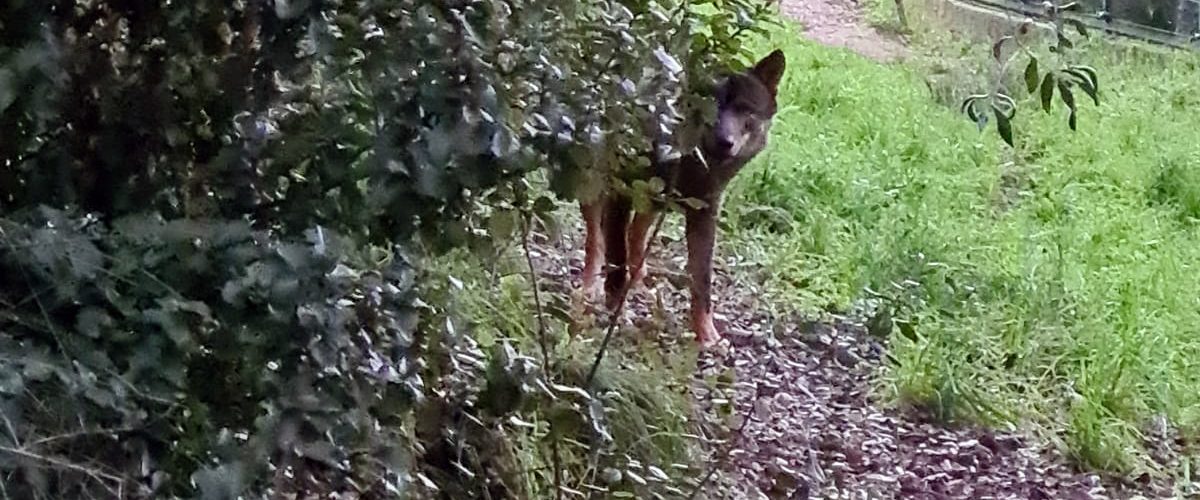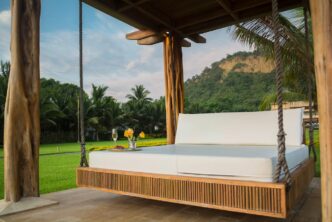Lorraine Worsley Carter comes face-to-face with a magnificent wolf on a luxury break to Lisbon
During these uncertain times, a trip to Lisbon between Lockdowns was a dream come true. In recent years Lisbon has been climbing up the charts of weekend break destinations, this most westerly capital in Mainland Europe has all the right ingredients and not just for those lovers of the famed Pastel de Nata, that well-loved ‘Portuguese Tart.’
We are fortunate to have family living in Lisbon, so, for our recent sojourn we were able to join them and visit some of the marvellous places that await travellers who are prepared to travel a little further out of the capital city. There many fascinating areas around the Lisbon region tucked away from the immediate charms of one of Europe’s oldest capital cities.
There are a variety of these exciting municipalities and towns to visit, just an hour or so from Lisbon and I would say they all deserve at least a one night stay. When we have visited more of them, I will report back as we are compiling are wish list to add to our already visited; Sintra, Nazaré on Portugal’s Silver Coast, Obidos, Cascais ….more about all these in a future article.
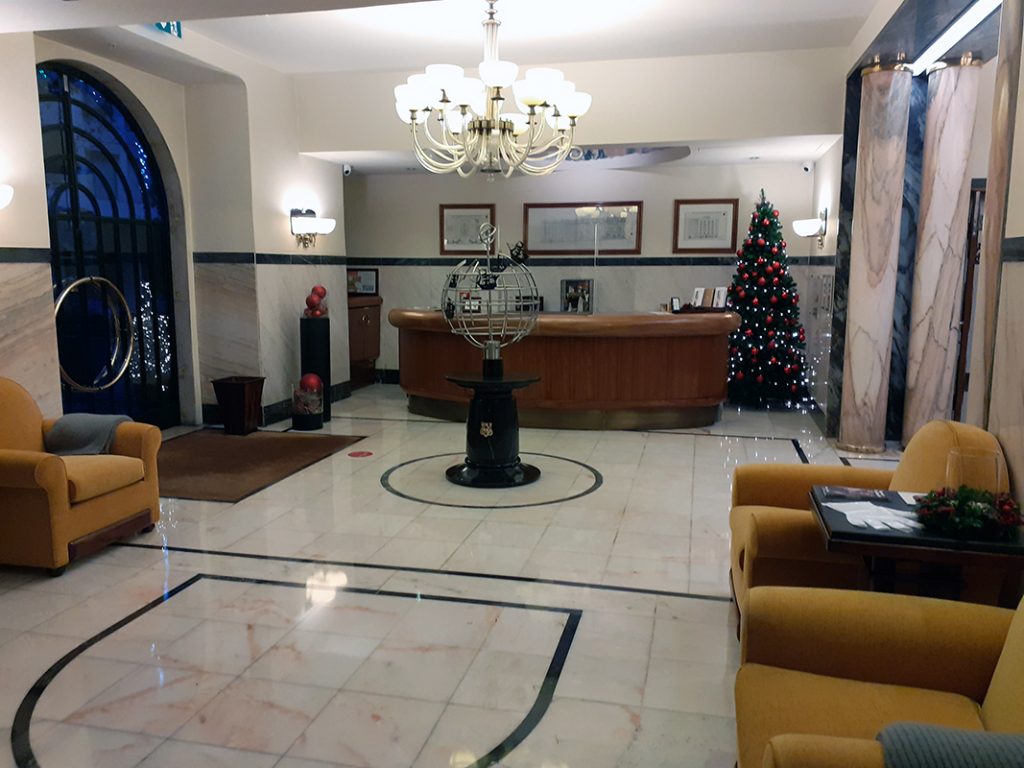
On arrival in Lisbon, we took advantage of the pre-Christmas low occupancy rates and decided to stay a single night in some 4 star and 5 star hotels across the city and it was evident, as soon as we were welcomed at the entrance, that the Hotel Britania would win our ‘Carter Best Hotel’ vote and we were correct to have thought this!
Located in the heart of Lisbon, Hotel Britania , known then as Hotel do Imperio, opened its doors during the World War II , when Portugal was a neutral country, the clients at the time were primarily foreign diplomats and high society and politicians. From the outset it rapidly became the symbol for modern style, with five floors of Art Deco loveliness. Each suite held a hall complete with chandelier , small lounge, bedroom and ensuite bathroom and other additions which were completely unheard of in hotels in Portugal at that time, namely a telephone, typewriter and radio set. There still stands the original barbers shop on the lower floor, although no longer in use, it is fully intact and one of the lovely staff will happily unlock the door for you to be able to step back in time for a moment.
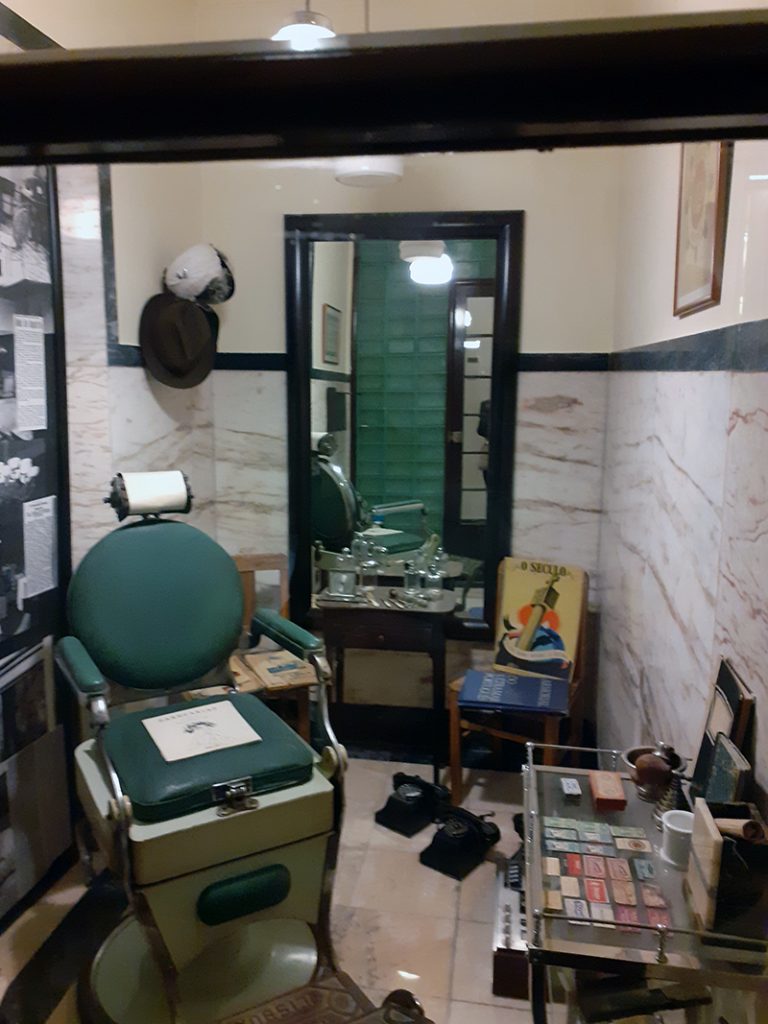
The hotel was the place for lavish parties, dancing, eccentricities, perhaps conspiracies and a little scandal. War documentaries were seen by customers, while dancing or playing clandestine roulette until dawn! High profile Bridge championships were held there, and I am told film star Omar Sheriff played bridge there when in town. The high life for me was partaking of the refreshments and pastries offered anytime during the day.
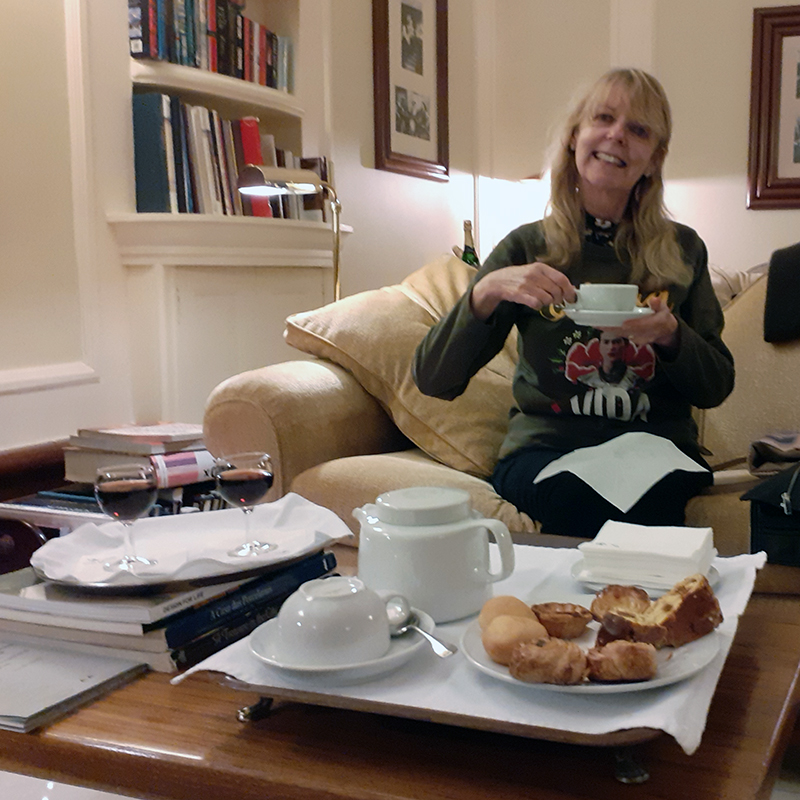
For my husband, Bob, he enjoyed the same repast, but with the addition of the complimentary Ginjinha. This Portuguese liqueur is made by infusing ginja berries (sour cherry – Prunus cerasus austera and the Morello cherry, steeped in aguardente- a form of brandy and adding sugar together with other ingredients such as cloves and/or cinnamon sticks.
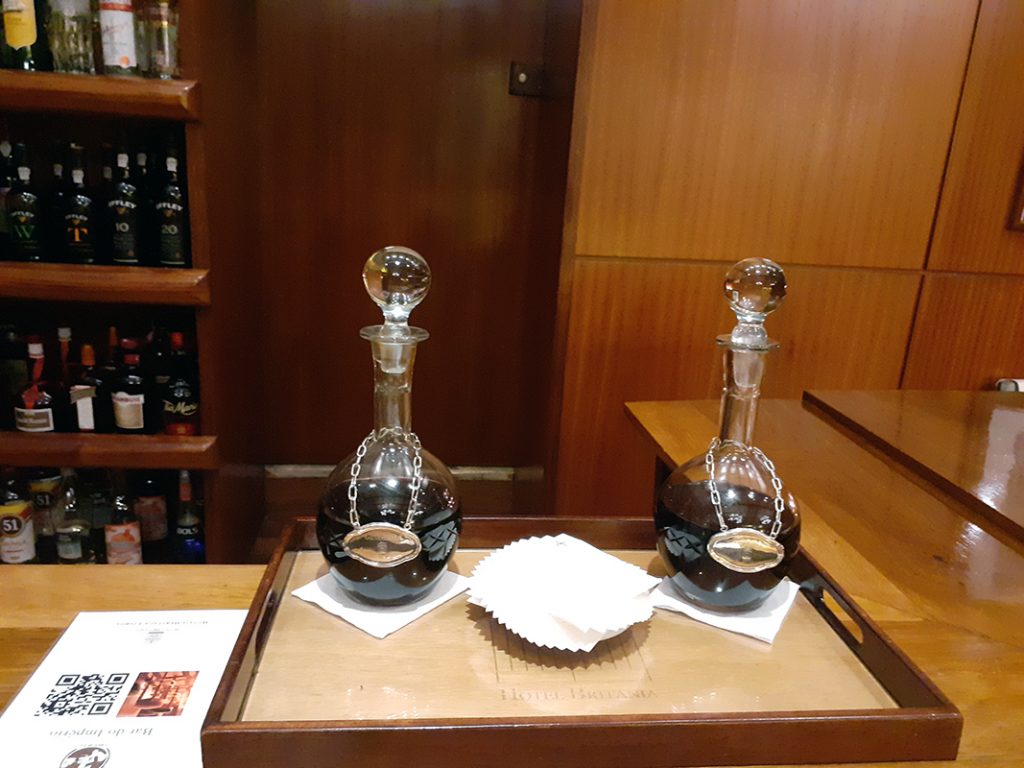
For three decades the hotel remained practically unaltered however, when its name changed to Hotel Britannia in the 70’s , so did the hotels persona, the hotel became modernised and many of its fabulous original features hidden from view. Thankfully, in the 1990’s work began to restore this lovely Art Deco building and once again the hotel could show case the opulence of a bygone era.
Our suite was on the fifth floor and this is the first hotel in the world I declared I could actually live in! Sadly, that can’t be, but we will definitely be back.
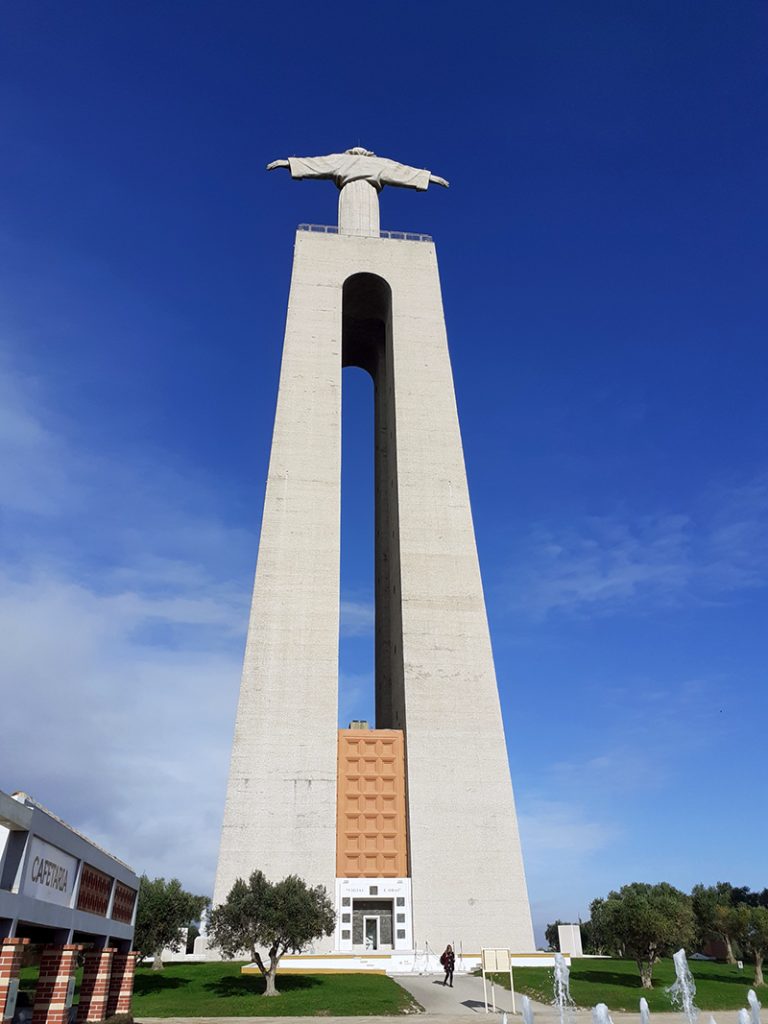
Before leaving Lisbon for its environs, we had two stops left. Our first, aptly as it was Christmas Eve, was visit the Christo Rei (Christ The King Statue), the statue is 92 feet high and stands on a pedestal of 270 feet, it overlooks the south side of the Tejo river estuary and is an important site of pilgrimage for many people.
There is a lift to a viewing platform, but we didn’t venture up there. The statue, inspired by the famous statue in Rio de Janeiro, was inaugurated in 1959 in thanks for Portugal’s escape from involvement in Word War II. We had been told that this statue is the only reason tourists have to cross the 25th of April Bridge (Ponte 25 de Abril in Portuguese) the longest suspension bridge in Europe with its two levels, the top level is for cars and the lower, which was added in 1999 is for trains.
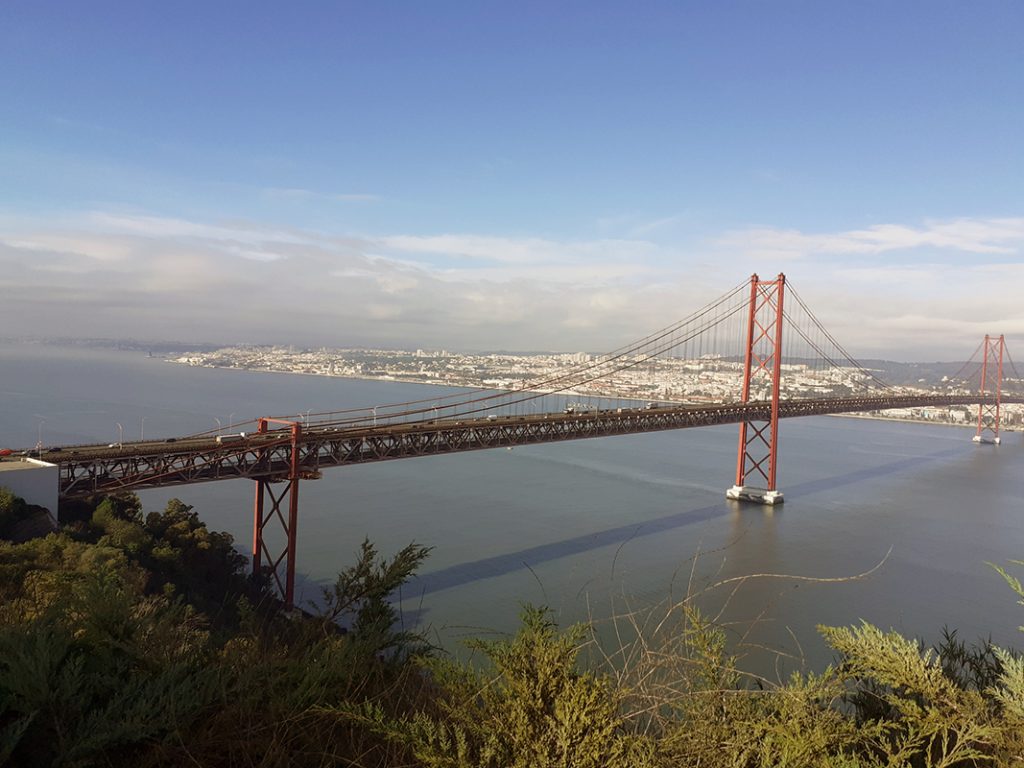
We disagreed that the statue was the only reason to cross the bridge, while our visit to the statue was definitely the highlight of our day, we were also pleasantly surprised to find less publicised towns around, such as Cacilhas, you can catch the ferry to this little port from the City of Lisbon and visit a whole host of fish restaurants. We have made a mental note to explore further on our next visit.
Our second ‘pilgrimage’ was to Belém , to visit Casa Pastéis de Belém the original home of the Pastel de Nata. There are many blogs written on the search and findings of THE best Patel de Nata, at present, that title is bestowed by me, on a market café in Alges, just outside of the City of Lisbon. Special recognition and respect must always be given to the Pastel de Natas from Casa Pastéis de Belém because, where would be without the fabled unnamed person who, centuries ago, offered sweet pastries for sale to the shop in Belem?
At the beginning of the 19th Century, there was a sugar cane refinery attached to a small general store in Belém, next to Mosteiro dos Jerónimos (the Heironymite Monastery) As a result of the 1820 liberal revolution by 1834 , all convents and monasteries in Portugal were shut down , the clergy and labourers expelled.
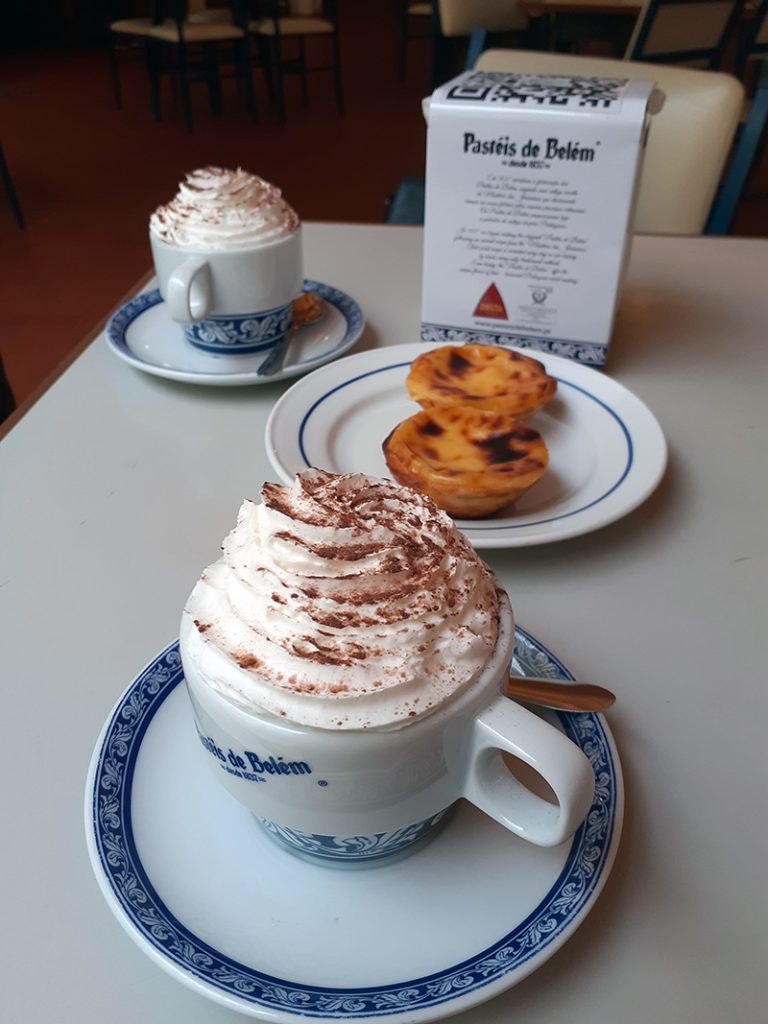
In an attempt at survival, an unnamed person from the Monastery offered sweet pastries for sale to the general store; pastries that would rapidly become known as ‘Pastéis de Belém’. In 1837, the baking of the “Pastéis de Belém” began in earnest , in the buildings attached to the refinery, following the ancient ‘secret recipe’ from the Monastery.
At that time the area of Belém was considered far from the City of Lisbon, and mainly accessed by steam-boats.
As the grandeur of the Monastery and the Torre de Belém (the Belém Tower) more and more visitors were attracted to the area and a stop for a ‘Pastéis de Belém’ soon gained popularity. Passed on and known exclusively to the master confectioners who hand-crafted the pastries in the ‘secret room’, this recipe remains unchanged to the present day and for this reason I feel a visit must always be made by me!
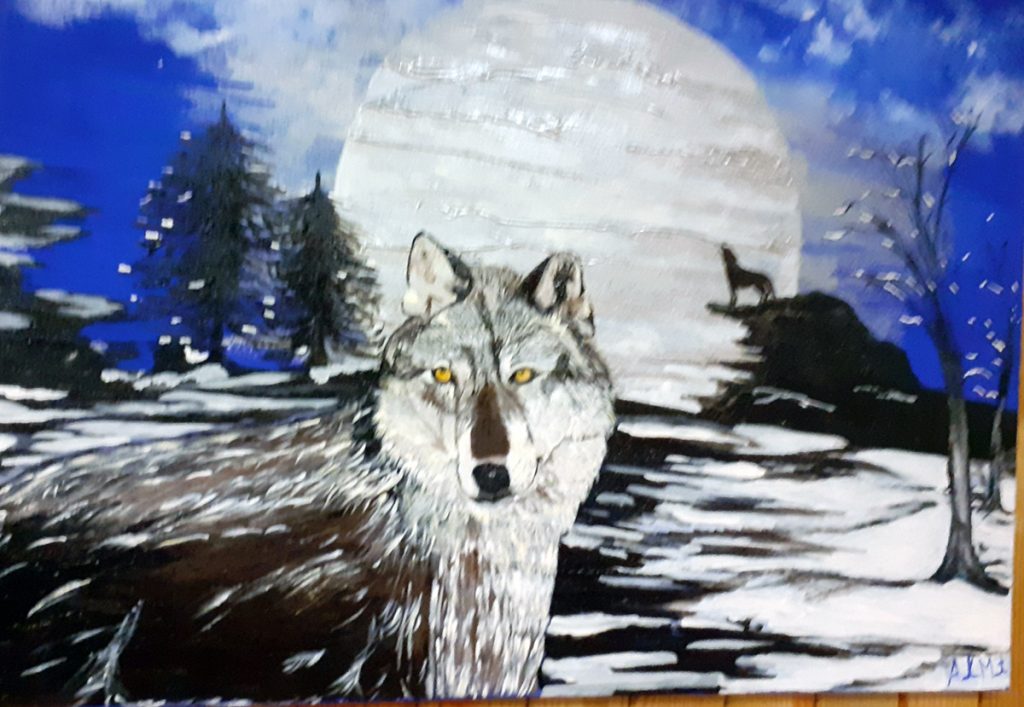
Following our Christmas festivities with our family, we were delighted to learn that there was a very special experience planned for us for Boxing Day. Portugal does not celebrate Boxing Day, so instead of the usual curried turkey or nut roast we were off to a wolf sanctuary.
The Iberian Wolf Recovery Centre (CRLI) was created in 1985 by a group of people ‘Grupo Lobo’ , who were concerned about the situation of the wolf population in Portugal. Their aim continues to be to provide an environment, in captivity, suitable for wolves that cannot live in freedom. These animals have been victims of traps, of illegal captivity, from other parks and zoological gardens, as well as others that were born in the Centre. There are around 12 wolves at the Centre. This mix of wolves preserves the genetic diversity of the Iberian wolf.
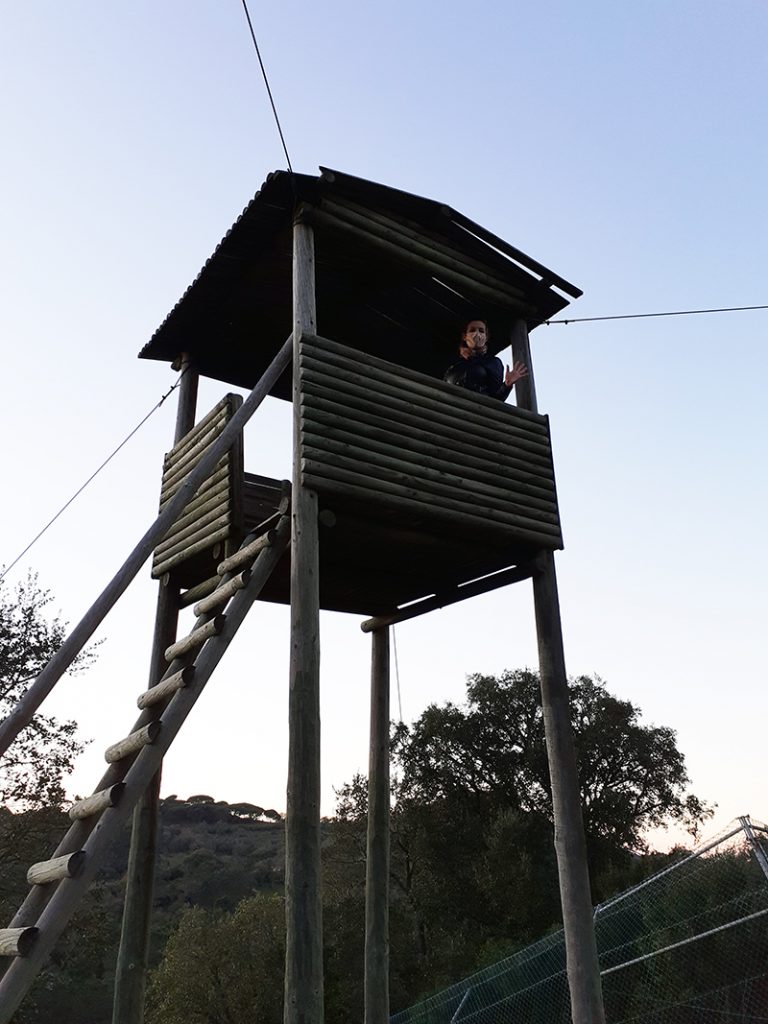
The Sanctuary occupies 18 hectares of land, in a wooded and isolated valley. It is located in the parish of Gradil, in the municipality of Mafra, about 30 km north of Lisbon, so around an hour’s drive away. The nearest villages (about 1.5 km away) are Picão and Vale Guarda.
The welfare of wolves is obviously one of the main concerns, so the Centre’s activities are based on a philosophy of a sanctuary, giving animals conditions similar to those of their habitat and reducing human interference and disturbance, so this is not a Centre where you go and pet wolves or take them for a nice walk on a lead.
This is not to say that a visit is not thrilling, because it is, visitors are not even guaranteed a wolf sighting, but they are guaranteed that by visiting the Centre that they are contributing to ecological and socio-economic conditions that are essential for the effective conservation of the national wolf population. As wolves live in packs, they are incredibly territorial, so there are five or six different enclosures each designed to be as close to their natural habitat as possible with minimal contact with humans.
The story of ‘Little Red Riding Hood’ is one most people have heard of and the Grupo Lobo are keen to provide the correct information about the wolf, a predator unknown to most people, and one which has always been associated with something demonic. It is, however, the wolves who are subject to many dangers and the Grupo Lobo are keen to impart the importance of the conservation of the wolf population. Sadly, there can be no release programme for the 12 wolves at the Centre due to human’s past cruelty of them.
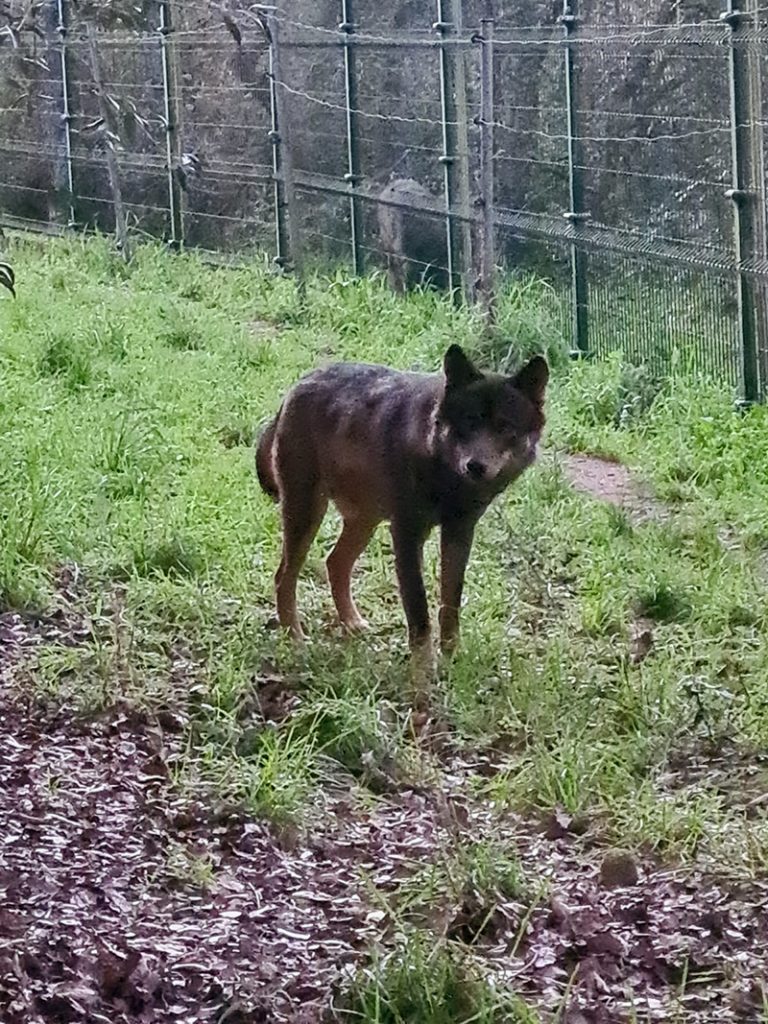
As wolves are nocturnal animals the visits take place in late afternoon. The walks are led by a volunteer and we met Ana who was to be our knowledgeable guide. Even in the balmy days of a Portuguese December, the nights are chilly, and we were glad we had worn our warm clothes and boots as the paths are uneven and the only lighting is from the moon. The walk along the perimeter of the enclosures lasts between an hour and a half to two hours.
As we peeked into the first enclosure, we saw nothing at first, even though we were well behaved and stayed quiet, as instructed. As we walked past an enclosure, we heard a tree branch break, and we were rewarded by our first view of a wolf. Once our eyes became accustomed to distinguishing him between the foliage, we were able to quietly acknowledge him and in return he stood squarely watching us, I wondered what he was thinking as he saw these humans, smiling and clicking away with their phones. He gave us a little show of picking up a stick in his mouth and walking with us for a while, perhaps he was one of the wolves more used to humans and had been rescued from a zoo or perhaps he just liked us!
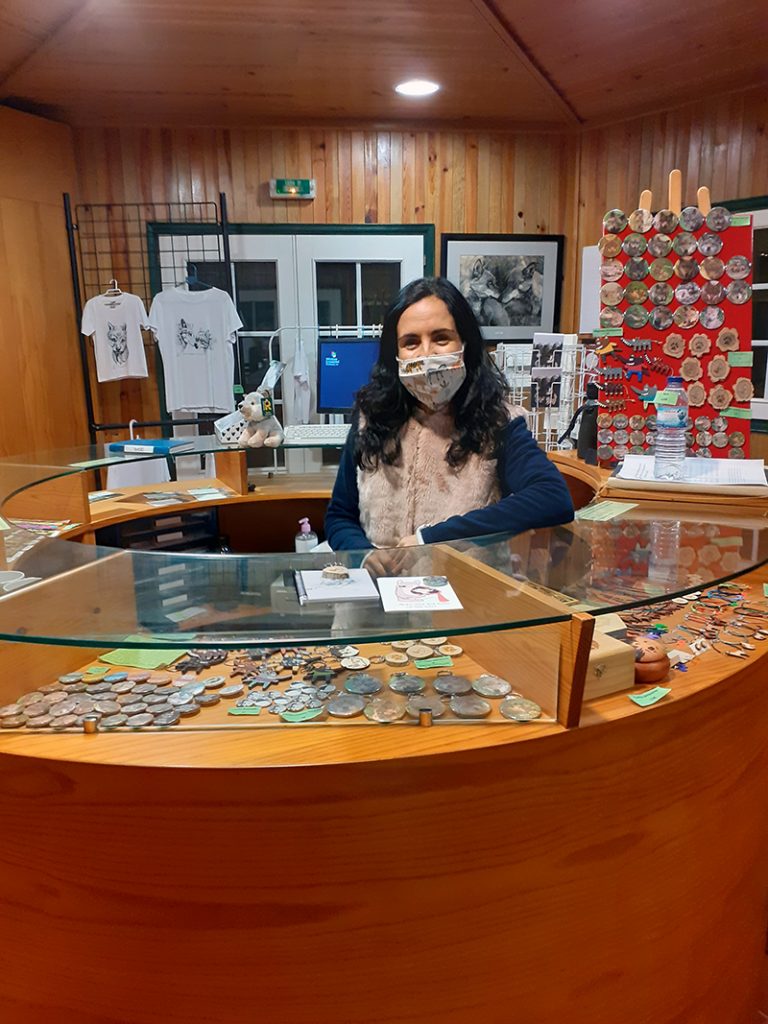
We continued with our walk, and listened intently, as Ana told us more about the wolves and how even the names they have been given are names of trees and rivers. When we reached a look out point, a wooden structure which looked like a tree house, the more agile in our party climbed up and were able to locate and point out wolves on far away hills. Each sighting produced a spark of excitement within us all.
In all we were fortunate to have spied four or five wolves. Ania led us back to the assembly point where there is a shop and a loo.
As would be expected there are wolf related items to purchase but all are thoughtful and in keeping with ecological conservation. You can also sign up to adopt a wolf for around 35 Euros per year.
As we made our way back to our car, the wolves began to howl, a hauntingly beautiful sound on a moonlit Boxing Day.
Rediscovering the golden age of travel on the Venice Simplon-Orient-Express

